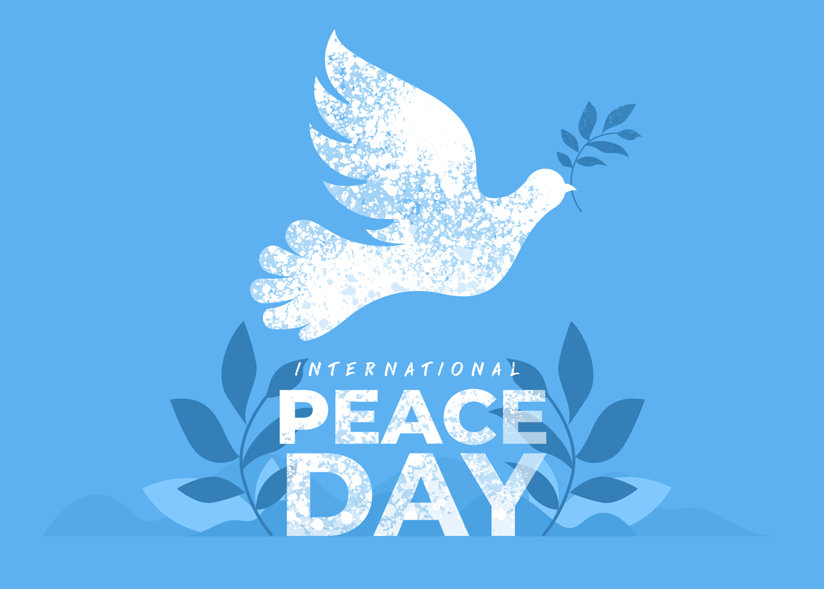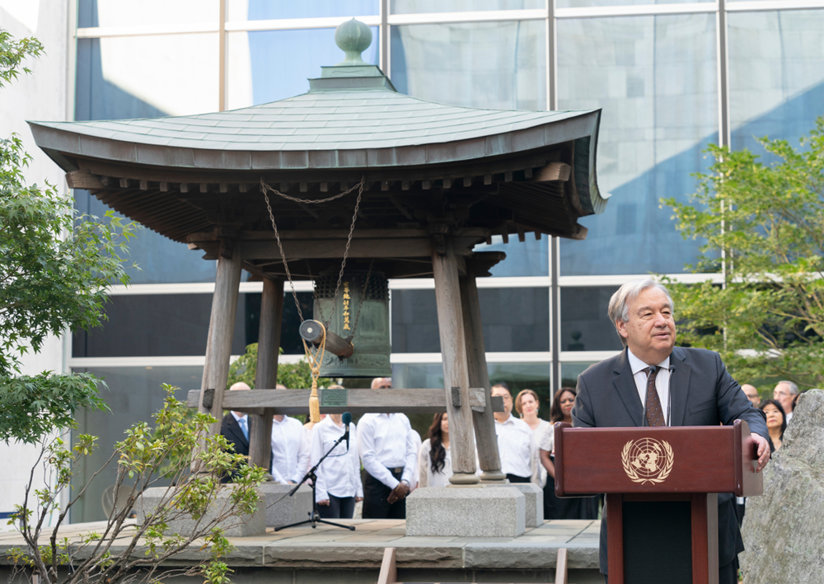
-
HOME
-
WHAT IS STANDOur Mission Our Values Our Help Contact
-
WHAT WE FIGHT FORReligious Freedom Religious Literacy Equality & Human Rights Inclusion & Respect Free Speech Responsible Journalism Corporate Accountability
-
RESOURCESExpert Studies Landmark Decisions White Papers FAQs David Miscavige Religious Freedom Resource Center Freedom of Religion & Human Rights Topic Index Priest-Penitent Privilege Islamophobia
-
HATE MONITORBiased Media Propagandists Hatemongers False Experts Hate Monitor Blog
-
NEWSROOMNews Media Watch Videos Blog
-
TAKE ACTIONCombat Hate & Discrimination Champion Freedom of Religion Demand Accountability
On UN International Day of Peace: What Will It Take to Achieve It?
The morning paper arrives. The TV screen flickers. The computer monitor flicks on. Each bears the same headlines: Peace Breaks Out, World Powers Declare Peace, Universal Cease-Fire Begins.
Possibly it’s a fanciful dream, but at the autumnal equinox, September 21, and for the rest of that day, the world has been ordered to take a breath and lay down its weapons along with the hate that attends their use.

The United Nations International Day of Peace began as just that fanciful dream, the brainchild of a broke would-be filmmaker still living in his mom’s house. Jeremy Gilley wrote letters proposing a day of peace—just one—to anyone he could think of, from the Dalai Lama to the Secretary-General of the United Nations, until within a decade the dream was realized. The first International Day of Peace was observed on September 21, 2007. Hostilities worldwide—from the Middle East to Afghanistan—ceased. And though no swords were turned into plowshares nor spears into pruning hooks, the world proved it could do it. It could stay its temper for one day. And if it could do that for one day, then why not two? A week? A year? An eternity?
The United Nations keeps that dream burning bright. This year’s International Day of Peace theme is “End racism. Build peace.”
“You are the strongest and loudest voice calling for change. You are calling out for tolerance.”
As a lead-up to this year’s observance, an international gathering of over 500 young people assembled to be honored and acknowledged at the UN last week for the Youth Observance of the International Day of Peace. They each had been active in their own countries rallying others to the cause of ending racism and building peace, through seminars, concerts, TV shows and other projects.
UN Secretary-General António Guterres addressed the youth: “Ending racism and discrimination means following the lead of young people like all of you gathered here today. You are the strongest and loudest voice calling for change. You are calling out for tolerance and the end of racism. You are demanding that world leaders wage peace instead of war. Peace is how we must treat one another. So not only the future but the present belongs to you.”

The Peace Bell—a gift to the United Nations in June 1954 from the UN Association of Japan and heard just twice yearly, at the vernal and autumnal equinox—was tolled by the Secretary-General in a ceremony earlier that day. The bell, cast from coins donated by delegates of 60 nations, is inscribed in Japanese and English: “Long live absolute world peace.”
The Secretary-General stated: “We have to be aware of the injustice in the world before we can do anything about it. The poison of racism continues to infect people’s hearts and minds in every corner of the world. Online, in the streets, and the neighborhoods—everywhere. The voices of hate, intolerance and intimidation are growing. We must stop this assault on basic human rights.”
Peace cannot exist in a culture that has been taught intolerance and distrust.
Peace begins with human rights. But the emphasis is on “begins,” for human rights are often recognized grudgingly. As Martin Luther King wrote in his Letter from Birmingham Jail, “We know through painful experience that freedom is never voluntarily given by the oppressor; it must be demanded by the oppressed.”
So peace doesn’t involve just the granting of rights. Peace doesn’t involve merely the absence of armed conflict among nations. Peace involves and requires a willingness to cooperate and work with others, and that in turn requires trust.
Peace cannot exist in a culture that has been taught distrust and intolerance.
As Scientology Founder L. Ron Hubbard observed, “On the day when we can fully trust each other, there will be peace on Earth.”









